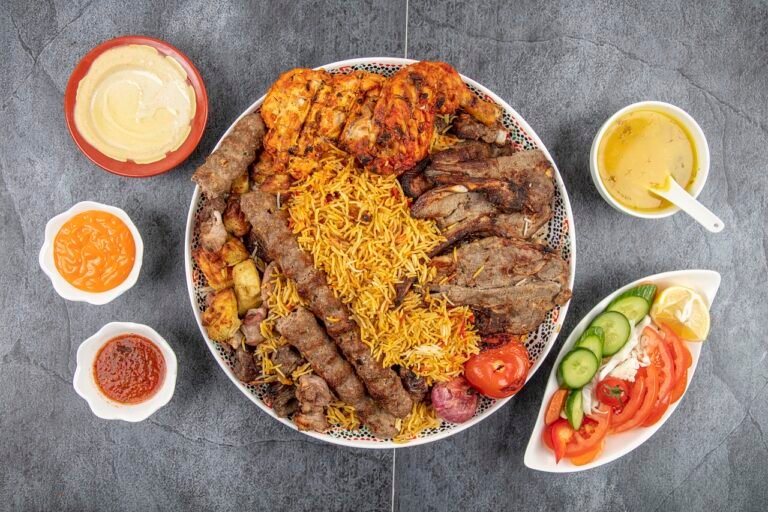Sindhi Biryani is an energetic and extravagantly prepared variety of ordinary biryani that holds an excellent spot in the different weaving of South Asian food. Beginning from Sindh, a locale in present-day Pakistan, Sindhi Biryani isolates itself from various types of biryani through its extraordinary blend of trimmings, flavors, and cooking techniques. This article dives into the obvious features of Sindhi Biryani, exploring its credible roots, trimmings, game plan procedures, and social significance.
Obvious Setting
To understand the uniqueness of Sindhi Biryani, considering its evident and social setting is central. The Sindhi region, which navigates parts of current Pakistan and India, has a rich culinary heritage influenced by various improvements including the Bedouins, Persians, and Mughals. The biryani, a dish that presumably started from the Persian pilaf, was changed and coordinated into the Sindhi food north many years ago.
The Sindhi public, known for their benevolence and culinary fitness, embraced the biryani and made it their own. This change achieved a dish that holds the substance of standard biryani anyway and is specially upgraded with neighborhood flavors and trimmings. The Sindhi Biryani is a show of the district’s ability to blend outside influences in with local flavors, making an extraordinary and sweetheart culinary practice.
Focus Trimmings
Sindhi Biryani is portrayed by a blend of trimmings that isolate it from various biryani combinations. While the essential pieces of rice, meat, and flavors are typical to all biryanis, Sindhi Biryani incorporates express trimmings that add to its indisputable taste:
- **Meat Choices**: Not the least bit like a couple of biryanis that use simply chicken or sheep, Sindhi Biryani habitually integrates both, and to a great extent meat. The choice of meat changes considering common tendencies and openness.
- **Rice**: Basmati rice, renowned for its long grains and aromatic scent, is typically used to make Sindhi Biryani. Before the rice is combined with seasonings and meat, it is partially cooked.
- **Spices**: Sindhi Biryani is well known for its extraordinary and sweet-smelling zing blend. Essential seasonings include red bean stew powder, garam masala, turmeric, cumin, and coriander. Besides, a remarkable part of Sindhi Biryani is the usage of tamarind and yogurt, which add a tart flavor to the dish.
- **Vegetables**: The dish now and again combines vegetables, for instance, potatoes and tomatoes, which are cooked with the meat and flavors. Potatoes are an imprint fixing, adding surface and flavor.
- **Herbs and Garnishes**: New cilantro, mint, and cooked onions are for the most part used to adorn Sindhi Biryani. These decorations enhance the flavor and provide visual appeal.
- **Tamarind**: One of the top dog trimmings in Sindhi Biryani is tamarind. Its cruelty stands apart superbly from the flavors, giving the biryani a specific tang.
- **Yogurt**: Yogurt is used to marinate the meat, relaxing it and adding a rich surface to the dish.
Arranging Method
The preparation of Sindhi Biryani incorporates two or three key advances that add to its unprecedented flavor profile:
- **Margination**: The meat is marinated in a blend of yogurt, flavors, and on occasion tamarind sticksThis step is major for blending the meat in with basic flavors.
- **Frying**: Onions are seared until splendid brown to make a rich base for the biryani. These cooked onions are in a manner used as a frivolity.
- **Layering**: The somewhat cooked rice is layered with the enhanced meat and vegetables. This layering system ensures that the flavors combine during the last cooking stage.
- **Cooking**: The “Dum” method, in which a vessel is fixed and heated over a low fire, is routinely used to prepare the biryani. This slow-cooking method allows the flavors to fully develop and the rice to retain its fragrant qualities.
- **Final Touches**: Resulting in cooking, new flavors like cilantro and mint are added, close by extra singed onions for embellishment. A couple of assortments moreover integrate a press of lemon juice to illuminate the flavors.
Unprecedented Flavor Profile
The flavor profile of Sindhi Biryani is specific given the wary balance among flavors and trimmings:
- **Spicy and Tangy**: The blend of red stew powder and tamarind gives Sindhi Biryani its undeniable blazing and tart flavor. The power of the flavors is changed by the polish of the tamarind.
- **Rich and Savory**: The use of burned onions and yogurt adds to the abundance of the dish. The onions add a sweet and tasty note, while the yogurt adds perfection and significance.
- **Herbal and Fresh**: The new flavors used as decorations give a blast of originality that supplements the rich and hot sorts of the biryani.
Social Significance
Sindhi Biryani is a unique choice of dish; it holds social importance for the Sindhi public. It is a staple at blissful occasions, family parties, and merriments. The preparation of Sindhi Biryani is ordinarily viewed as a public activity, with families getting together to cook and participate in the dish. It reflects the Sindhi potential gains of friendliness and benevolence, as serving biryani is seen as a badge of warmth and connection.
In the same vein, the meal highlights Sindhi cooking’s adaptability and creativity. By combining close-by trimmings and changing regular recipes, Sindhi Biryani shows the region’s ability to progress while safeguarding its culinary inheritance. It stands as a picture of Sindhi character and pride, celebrated in Sindh and among Sindhi social classes all around the planet.
Assortments and Nearby Effects
While Sindhi Biryani has its model game plan, there are a couple of regional assortments that reflect neighborhood tastes and tendencies:
1. Hot Variations
- A couple of versions of Sindhi Biryani are prepared with extra flavors and stew to take exceptional consideration of individuals who favor a more serious power.
- **Vegetarian Options**: But by and large made with meat, veggie sweetheart versions of Sindhi Biryani are also notable. These varieties use a blend of vegetables and paneer (Indian curds) instead of beef.
